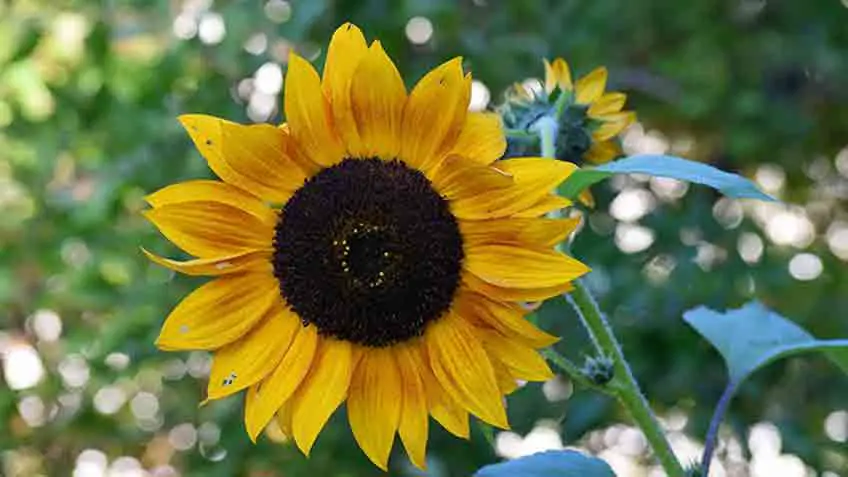Sunflower is known as a staple food supply for millions! It can be turned to make some stunning recipes like roasted beans, sesame sunflower, and butter sunflower for your entire household. However, the joy can be doubled only when you have cultivated them right in your garden. Having them in your garden can prove to be a life-changing experience as it allows you to make recipes using sunflower beans anytime.
All the joy can be the refrain for next season if you know how to harvest sunflower seeds for planting. Here you will find a step-by-step guide that will help you digest the entire process without much hassle. Although the process is not complicated, you can reap sunflower seeds to dry for replanting, prepare for a delicious bite, and yet again purpose into suet cakes to take care of the birds in the cold weather months. So, if you are ready, let’s get into it!
Pick The Right Variety
Confection varieties are developed for edible seeds; confection varieties come in two distinct types, such as “tall” types and “short” types.
Tall confection types usually harvest the most seeds; however, seeds might be more modest estimated. Such variety incorporates “Giganteus”, “Mammoth Gray Stripe”, “Mammoth Russian”, and “Titan”. You can tell from the names that these will be enormous blossoms!
Short varieties are limited, and they ordinarily have fewer seeds per head, yet the seeds are more giant. These varieties include “Illustrious Hybrid”, “Tidbit Seed”, and “Super Snack Mix”.
How To Harvest Sunflower Seeds
However, the process is pretty simple, but you would require professional help not to make any mistakes. While following our simple and easy harvesting sunflower seed guide, you will have stunning production at the end.
Step 1: Cut Them Off!
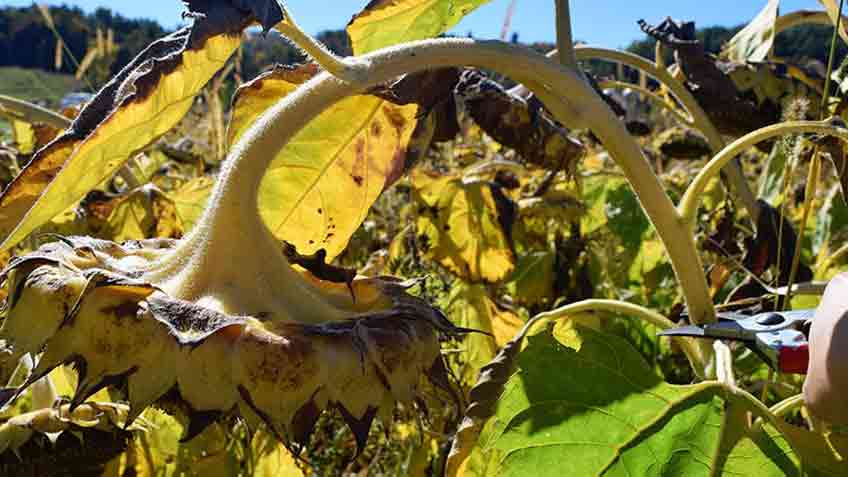
This is, without a doubt, the most straightforward and fastest step to accomplish. When your sunflowers have kicked the bucket back totally, and the backs of the sprouts are brown, it’s an ideal opportunity to collect. You’ll likewise see the seeds are stout and, to some degree, free. It’s time to separate the tail with a sharp cutting tool while spacing one fit down from its flower. Keep your flower inside the container to save any loose seed.
Step 2: Hang Them To Dry
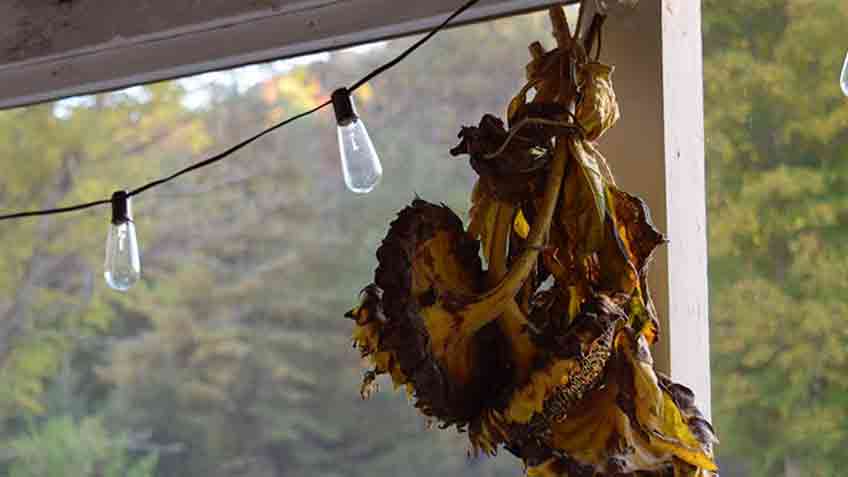
Once you have collected flowers now, it’s time to hang them for a few days. Hanging will help the sunflower to soak extra moisture and water inside the flower. During the hanging process, ensure that securing your seeds is essential when it comes to protecting them from birds. In case you’re anxious over the birds eating all of your sunflower seeds before you find the opportunity to reap, tie a paper pack over the sprouts directly. You can likewise cut the stalks before they are prepared and hang them inside to dry.
Hanging sunflower is essential when you feel that some seeds are still not dry enough for harvesting. Within five days of the hanging process, you will be able to harvest sunflower seeds.
Step 3: Remove Seeds From Flowers
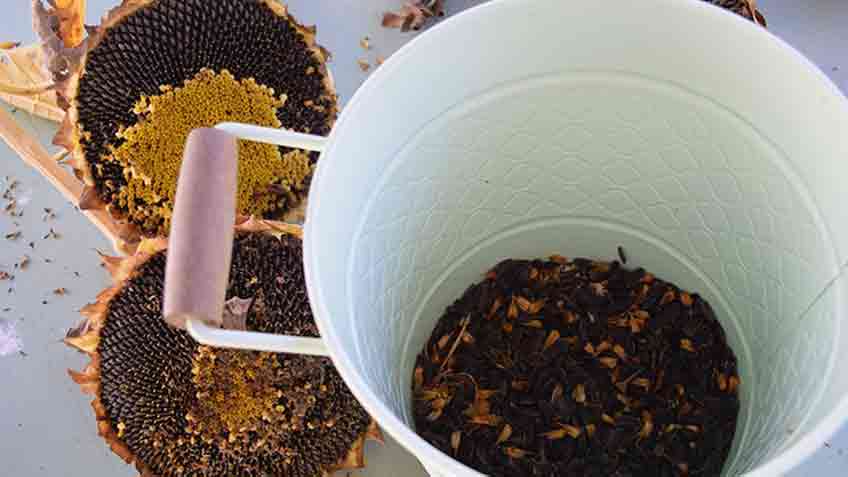
Removing seeds from sunflowers is a kind of soul-satisfying activity that brings joy while performing this part with friends and family. Sunflower de-seeding is not something that will create any hassle for you; instead, they will come out softly with a gentle touch. However, you can wear gloves if you haven’t performed de-seeding before. Now you can firmly rub sunflower over a basket or anything; here, you will receive petals and other material from sunflower, but you can remove them later.
Step 4: Dry Seeds Before Planting
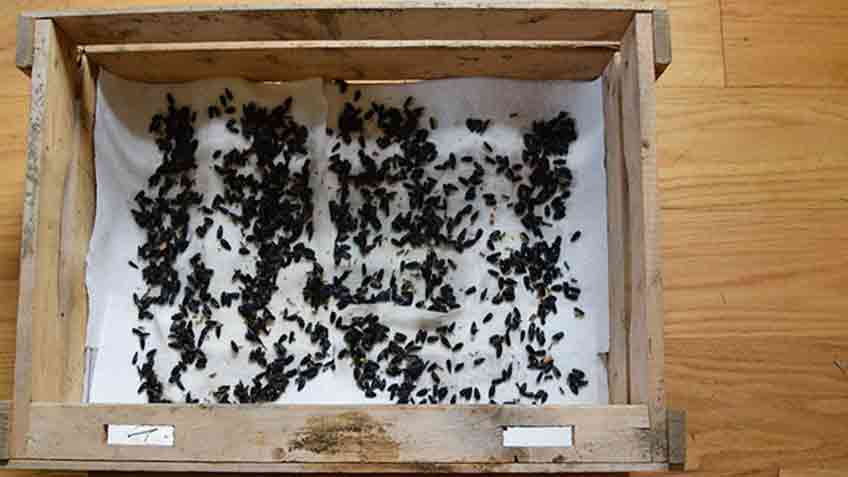
If you’re anticipating re-sowing the seeds or making them into suet cakes, wash the seeds in a strainer and afterward collect the extra pieces that don’t seed. To spread them evenly, you need cardboard or any wooden box wrapped with paper towels and dissipate the seeds evenly to help them dry quickly. Make sure to have sufficient space among each source if you want to uplift the drying process.
Permit them to dry for a considerable time, or you can also leave them overnight. If you’re saving the seeds for replanting, store them in a hermetically sealed holder in a cool or dry spot before planting. To remind the date and variety of sunflower seeds, you should always label them right on the box. While following that way, you will be able to harvest for up to one year.
When To Harvest Sunflower Seeds
Sunflowers sprout through the mid-year and even into the fall months, contingent on where you live. Toward the finish of your sunflower season, watch out for your blossoms to decide when the ideal opportunity is intended for gathering. Signs your sunflowers are prepared:
- The foliage has kicked the bucket back totally
- The backs of the flower heads are brown
- The seeds are stout and relatively free
Frequently Asked Questions
How to harvest sunflower seed for next season?
If you are planning to save the sunflower seeds then it is recommended to leave flowers for up to days until they are dried enough to be stored. Cut them off and keep them under sunlight. Once they are soaked you can get them off the flower with a gentle rub.
How to store sunflower seeds for planting?
Assuming you are worried about soil or microbes, wash your seeds under a tap, then, at that point, pass on them to dry. Once gathered, seeds ought to be put away in a dry spot, in an envelope, a container, or a paper pack.
What should I do with dead sunflower heads?
If you grow Helianthus Salicifious variety then it is recommended to trim the dead stalks to the ground. You can also burn and chop if they are of no use now.
Can I eat raw sunflower?
While the actual seed is encased in a highly contrasting striped shell, sunflower seeds are white and have a delicate surface. Known for their unique nutty character and high dietary benefit, you can eat them raw, simmered, or into many other dishes.
Wrap Up
Although You’ve effectively reaped and successfully stored your sunflower seeds for the next harvest.
From eating to heating, making suet cakes for birds over the colder time of year, or replanting into the following year’s nursery, sunflowers are amusing and straightforward to grow and harvest for almost every gardener in America. We would recommend you perform sunflower seed harvesting in gathering as it will help kids absorb knowledge delivered in a fun way.

